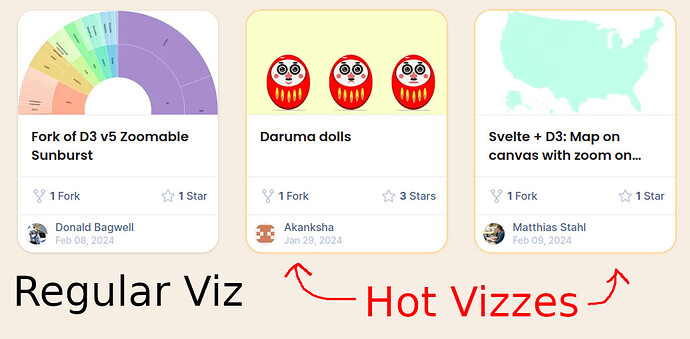One of the defining characteristics of VizHub 3 is “Hot Vizzes”, or, vizzes that support hot reloading. These are differentiated from regular vizzes (which use vanilla HTML) by a glowing frame.
Hot Reloading
The fundamentals are documented here:
To summarize:
- There is no
index.html- that’s what triggers the V3 Runtime - The entry point is the
mainfunction exported fromindex.js - The
mainfunction takes an argumentcontainer, a DIV that has measurable dimensions usingclientWidthandclientHeight - The second argument to
mainis an options object containingstateandsetState. - The state of the application is stored in
state, which is initialized as an empty object{}. - The
setStatefunction can be called with a function that uses the previous state to create a new state object using immutable update patterns.
This example shows usage with D3 transitions:
This example shows patterms for interaction:
This example shows patterns for animation:
Interactive Widgets
The following interactive widgets are supported in the code editor.
- Alt + Drag on a number to change it by dragging
- Alt + Click on a color hex code to change it with a color picker
- Alt + Click on a boolean value (
trueorfalse) to toggle it - Alt + Click on a URL to open it in a new tab
Why?
The point of hot reloading, and the reason to invest in writing hot-reloadable code, is so that you can iterate faster in a collaborative context, accelerating time to delivery for dataviz projects, and making the work itself more joyful. The hot reloading and interactive widgets work across clients in real-time, so you can use these tools while, for example, pair programming, mob programming, or to action client feedback live during a presentation meeting!

